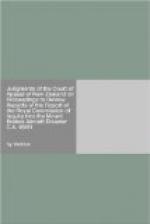The navigation system used by DC10 aircraft is a computerised device known as the area inertial navigation system (AINS). It enables the aircraft to be flown from one position to another with great accuracy. Prior to departure of a flight the AINS aboard the aircraft is programmed by inserting into its computers the co-ordinates of the departure and destination points (in degrees of latitude and longitude) together with those of specified waypoints en route. In the case of the Antarctic flights (which were engaged on what may be described as a return trip without touch-down) the southernmost waypoint, like each of the intermediate positions, was really a reference point to which the pilot knew the aircraft would be committed if it were left to follow the computer-directed flight track. And as mentioned the southern point for the preferred route to the McMurdo area was a ground installation at Williams Field.
During 1977 the co-ordinates for each waypoint which comprised the Antarctic routes had not been stored on magnetic tape for automatic retrieval and insertion into the navigation computer units of the aircraft. Instead the flight plan was dealt with manually and upon issue to the aircrew at the time of departure was manually typed by the pilot concerned into the aircraft computer units. When the Air New Zealand ground based computer was used in 1978 to produce computerised Antarctic flight plans they followed the same format as those that had been produced earlier. But before the ground computer could be programmed it had been necessary for an officer of the navigation section to prepare a written worksheet containing all the waypoints and their respective latitude and longitude co-ordinates which then were transcribed from the worksheet. And by reference to the original flight plan used in February 1977 this was done by Mr Hewitt, one of the four members of the navigation section at airline headquarters. He said in evidence before the Royal Commission that when he went on to take from his written worksheet the longitude co-ordinates of the McMurdo waypoint he mistakenly transcribed the correct figures of 166 deg. 48’ as 164 deg. 48’ by inadvertently typing the figure “4” twice. This had the effect of moving the McMurdo waypoint 25 nautical miles to the west and once in the aircraft’s system the navigation track which then it would follow from Cape Hallett when under automatic control would be over the[1] Sound rather than directly to Williams Field.
At this point it should be mentioned that the print-out of a flight plan shows not merely the co-ordinate waypoints but also a finely calculated statement of the direction and distance between them. This last information is obtained independently from what is called the NV90 programme of the computer which is able automatically to calculate the rhumb line track and distance between each of the respective waypoints once the co-ordinates have been fed into it. This




